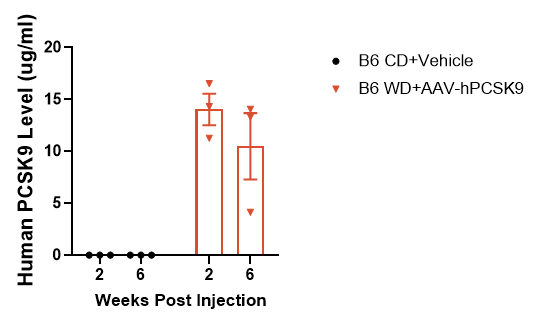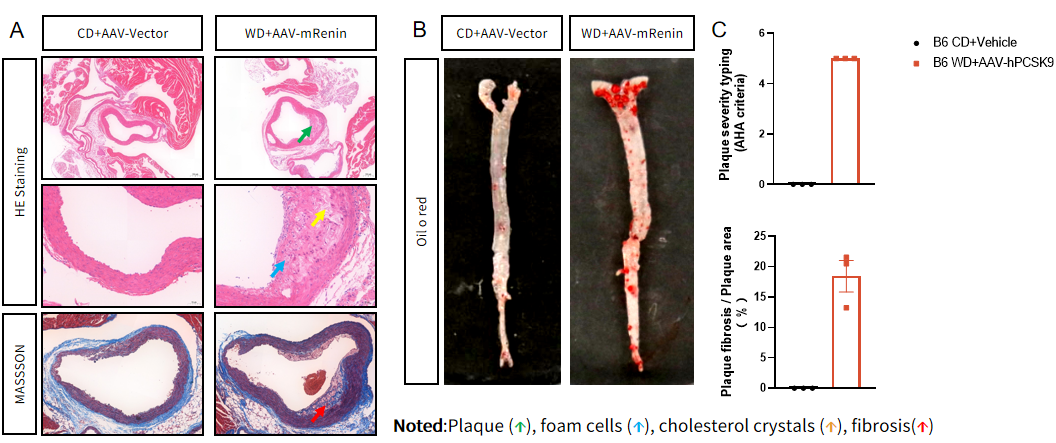Atherosclerosis (AS) is a chronic inflammatory disease and the main pathological basis for cardiovascular diseases (such as coronary heart disease, stroke, etc.), which seriously threatens human health. Proprotein convertase subtilisin/kexin type 9 (PCSK9) is a protein closely related to lipid metabolism. By binding to the low-density lipoprotein receptor (LDLR), PCSK9 promotes endocytosis and degradation of LDLR, thereby reducing the number of LDLRs on the cell surface and increasing the level of low-density lipoprotein cholesterol (LDL-C) in the blood. Studies have shown that the abnormal expression of the PCSK9 gene is closely related to the occurrence and development of hypercholesterolemia and atherosclerosis. By constructing an adeno-associated virus vector (AAV-hPCSK9) carrying the human PCSK9 gene (hPCSK9), the efficient expression of PCSK9 in mice can be achieved, thus increasing the LDL-C level in the blood of mice and accelerating the process of atherosclerosis. Combining the PCSK9 overexpression mediated by AAV-hPCSK9 with a Western diet can rapidly and effectively induce the formation of a mouse model of atherosclerosis. This model recapitulates the pathological characteristics of human atherosclerosis, such as lipid deposition, inflammatory cell infiltration, and thickening of the vascular intima.
hPCSK9 protein expression after AAV injection

Fig 1. hPCSK9 protein expression in the plasma 2 and 6 weeks post AAV injection. Data presented as Mean±SEM, n=3.
1. AAV-hPCSK9 combined with a Western diet induces hypercholesterolemia in B6 mice.

Fig 2. Plasma cholesterol and LDL-C level detection post-AAV injection. Data presented as Mean±SEM, n=3.
2. AAV-hPCSK9 combined with a Western diet induces atherosclerosis in B6 mice.

Fig 3. (A) H&E and Masson staining of the aortic root; (B) The oil red O staining of the whole aorta; (C) Summary data of the plaque and fibrosis.

